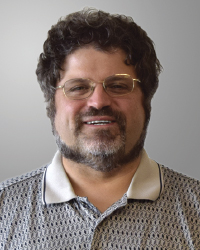 Nearly 18 million people died of cardiovascular disease worldwide in 2019, according to the World Health Organization. The biggest contributing factors are largely preventable — high blood pressure, diets with high fat and cholesterol content, smoking, excessive intake of alcohol and sugar, and sedentary lifestyles. Many of these behaviors contribute to the buildup of arterial plaques. Fortunately, doctors have an array of technologies at their disposal, including laser-based therapies to treat patients who are at risk of falling victim to this global health crisis.
Nearly 18 million people died of cardiovascular disease worldwide in 2019, according to the World Health Organization. The biggest contributing factors are largely preventable — high blood pressure, diets with high fat and cholesterol content, smoking, excessive intake of alcohol and sugar, and sedentary lifestyles. Many of these behaviors contribute to the buildup of arterial plaques. Fortunately, doctors have an array of technologies at their disposal, including laser-based therapies to treat patients who are at risk of falling victim to this global health crisis.
Of course, laser therapeutics of cardiovascular disease and arteriosclerosis must be considered along with a number of commonly used alternatives, such as balloon angioplasty, stent implantation, bypass surgery, and the use of artificial pacemakers. But the cardiovascular laser market is still expected to reach $0.66 billion in 2026, at a compound annual growth rate of 45.6%, according to Research and Markets. This market includes manufacturers, distributors, and end users, and it is provided with excimer and carbon dioxide lasers, as well as complementary components that support laser systems.
My cover story on cardiovascular applications of lasers in this cardiology-themed edition of BioPhotonics regards that the desire for precise diagnoses and treatment, as well as the development of fiber-based catheterization, has provided the impetus for the development of laser instrumentation to reach directly to the area that needs treatment — where partial or full blockages exist in the arteries. While some of the most severe cases of arterial plaques, called chronic total occlusions (total blockages), have previously been addressed by invasive surgery, methods such as excimer laser coronary angioplasty use fiber laser pulses to break down the molecular bonds of the plaques, which are composed of lipids, proteins, and cholesterol. Read more about how lasers are literally cutting through some of the worst cases of cardiovascular disease here.
Also in this issue, Radhika Poduval and Guillermo Tearney explore the use of optical coherence tomography via a catheter to provide structural information about coronary plaques. Garner their insights on page 47. Nicholas Giglio, Samantha Farrow, Kavya Sreeram, and Stephanie Grainger discuss how intravascular ultrasound near-infrared spectroscopy can reveal the content of plaques that are in danger of rupturing. Get the facts on this potentially life-saving technology here.
Meanwhile, Anne Buglione and Nozomi Nishimura write about how two-photon microscopy has proved itself to be capable of capturing fluorescent indicators of cellular activity, which can be applied to dynamic heart functioning. Learn more here. And Igor Efimov and Philipp Gutruf write about the use of optogenetics to treat arrhythmia via a technique that could potentially supplant electrical stimulation or defibrillation. Find out what the future may hold here.
In “Biopinion,” Laura Marcu and Christos Bourantas argue that the medical community must generate more robust studies of multimodal intravascular imaging techniques
to guide the effective treatment of cardiovascular disease. Read about their perspective here.
Enjoy the issue!
